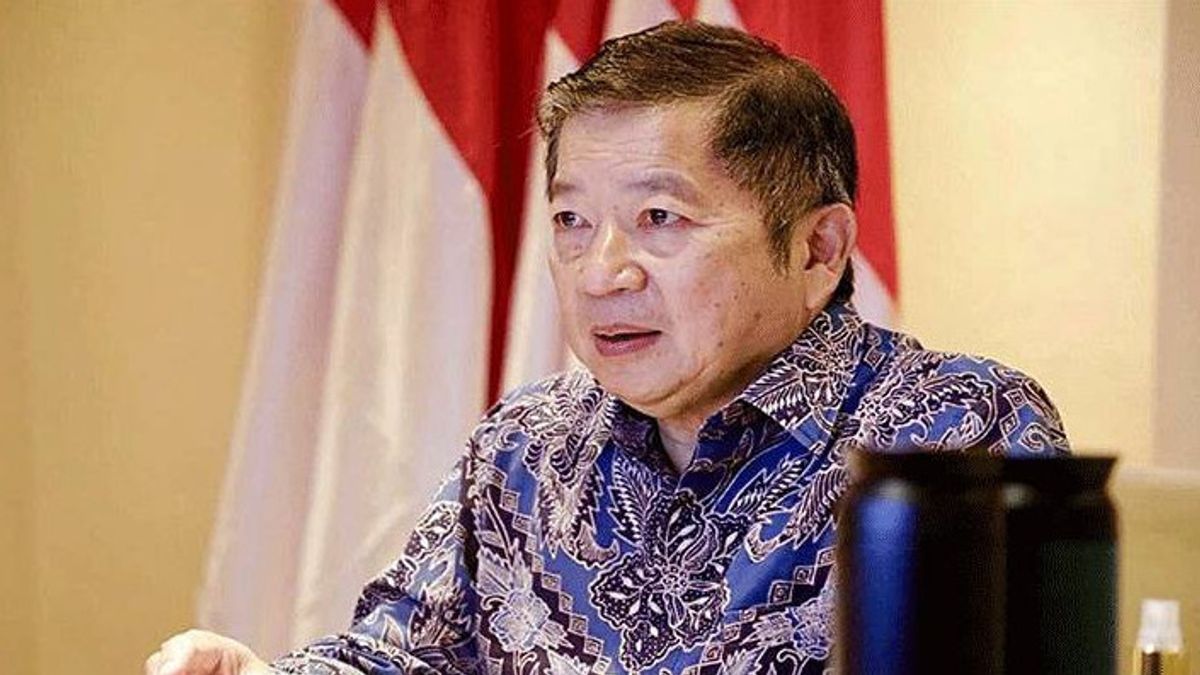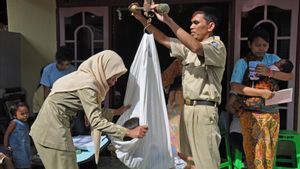JAKARTA - The government targets to eradicate malnutrition and stunting in the country. Therefore, stunting is included in the government's priority program in the 2020-2024 RPJMN.
Stunting is considered to determine the quality of humans in the future. Based on Bappenas data, the national stunting rate has continued to decline since 2013.
Minister of National Development Planning/Head of Bappenas, Suharso Monoarfa, said that in 2020 the World Bank will issue a human capital index that measures an individual's optimum productivity potential in the future, which is determined, among other things, from the life chances of children up to the age of 5 years, the quality and quantity of education and health.
"The value of Indonesia's human capital index in 2020 is 0.54 compared to Singapore which reached 0.88. This rate illustrates that Indonesia's current toddlers will only reach 54 percent of their maximum potential in adulthood. If this problem can be overcome, then the next generation In the future, they will be more productive and competitive and the goal of achieving the demographic bonus will be achieved, God willing," he said at the virtual National Coordination Meeting 'Moving Together to Accelerate Stunting Reduction', Monday, August 23.
Suharso said in the 2020-2024 RPJMN the government is committed to reducing the prevalence of stunting by half within five years, from 27.67 percent in 2019 to 14 in 2024.
"Basic health research data shows that since 2013 the national stunting rate has consistently declined. Therefore, with the spirit of hard work, we can achieve the RPJMN target," he said.
According to Suharso, stunting reduction efforts are also in line with the sustainable development goals (SDG's) to end all forms of malnutrition by 2030. This is because stunting is a multidimensional problem that requires integrated cross-sectoral efforts from the central, regional, to village levels.
"We all understand that the acceleration of stunting reduction is carried out with specific and sensitive intervention approaches. Like archery, arrows must point to the heart of the problem. The target for stunting reduction is to sharpen specific and sensitive interventions," he said.
Bappenas, said Suharso, also conducts exercises, the result of which is that all specific interventions, such as exclusive breastfeeding, supplementary feeding for pregnant women and toddlers, can achieve 90 percent coverage and compliance. Then the stunting will go down quickly.
"Sensitive interventions are a prerequisite for specific interventions. Some sensitive interventions also have a large impact on stunting reduction such as clean water, sanitation, and immunization coverage. Especially for immunization, this is very important to reduce infection in children. Therefore, complete basic immunization is one of the keys to reducing stunting," he said.
Suharso said that currently, the complete basic immunization coverage for infants has only reached 57.9 percent. It is still far from the RPJMN target of 90 percent in 2024. Therefore, he said, Indonesia must increase the coverage and expand the types of vaccinations to support stunting reduction.
SEE ALSO:
Furthermore, said Suharso, Presidential Regulation Number 2021 concerning Acceleration of Stunting Reduction is an affirmation of the importance of reducing stunting and assignments for ministries/agencies (K/L), and local governments (Pemda) to implement integrated interventions.
"This Presidential Regulation gives the task so that every intervention that we carry out is actually delivered and utilized by the targets at the individual and household levels. For this reason, strong coordination is needed, starting from planning, implementation, monitoring, and evaluating activities. Each intervention must be planned, financed, and monitored so that it is actually achieved," he said.
According to Suharso, the local government must make stunting a development priority, setting ambitious targets in the RPMJD and RKPD. Provide sufficient budget from regional expenditures and ensure convergence and common goals of each regional apparatus organization.
"The local government should compete to make innovations and the best efforts to reduce stunting. The local government's legacy is to make every child present in their territory free from stunting and grow into healthy and productive humans," he explained.
Suharso said that through the main functions of planning, budgeting, monitoring, and evaluation, Bappenas will continue to support convergence efforts to accelerate stunting reduction and ensure that each intervention will achieve its targets.
The English, Chinese, Japanese, Arabic, and French versions are automatically generated by the AI. So there may still be inaccuracies in translating, please always see Indonesian as our main language. (system supported by DigitalSiber.id)


















